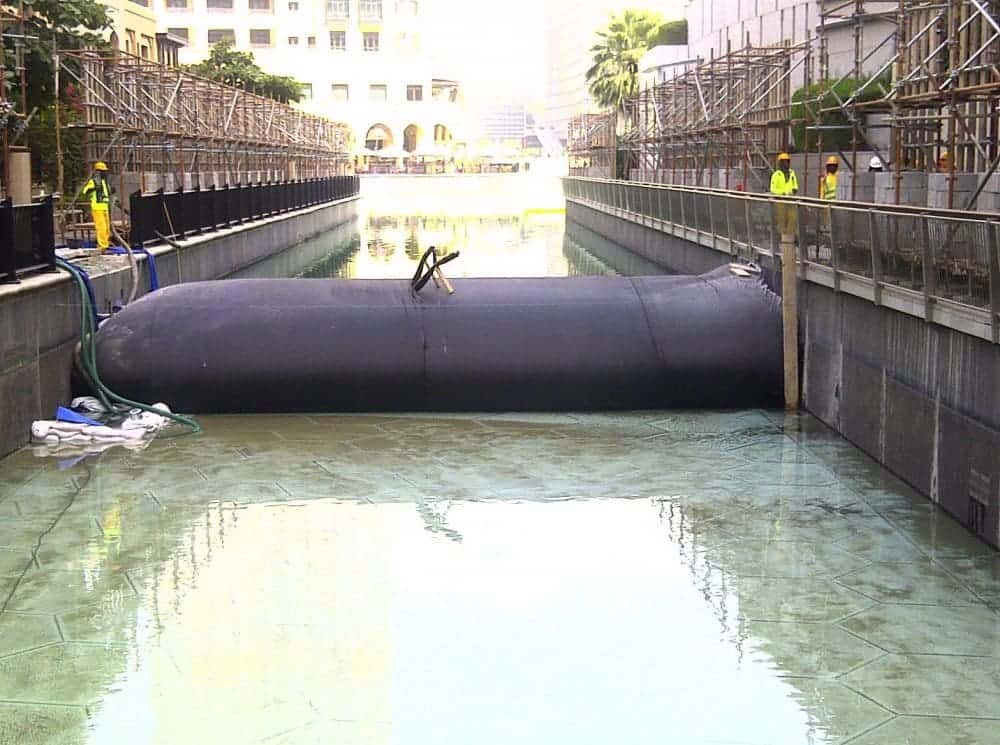When there is a need to temporarily control the movement of water – whether through damming, diversion or dewatering – most contractors agree that a cofferdam system (also coffer dams) are the best alternative. They are readily available in numerous configurations, easy to transport and install, cost efficient, and environmentally sensitive.
The cofferdam itself is one of the five parts that comprise a Cofferdam System:
- Cofferdam – a flexible yet durable water barrier made of high technology materials
- Water discharge pumps (2) – to draw in on-site water to inflate the cofferdam(s)
- Discharge hoses (2) – to transport water to and from the cofferdam(s)
- Restraining ropes – to assist with the unrolling and positioning of large cofferdam systems
- Connections – to couple together two or more cofferdams
A cofferdam (also coffer dam) is a temporary enclosure in or around a body of water that is constructed to allow the 3-D’s of water control (dewatering, diversion, or damming) of an enclosed area. The primary purpose of a cofferdam is to create a dry environment for a project to proceed. They were first used in 1736.

Dewatering:
Dewatering/un-watering are common terms used to describe the removal or drainage of ground or surface water, typically on a construction site. Dewatering is often required before subsurface excavation for such things as foundations, shoring, cellar space and repairs to existing water structures.
Diversion:
Diversion is the temporary (or sometimes permanent) re-routing of water. It may be required to initiate a project and/or allow a project to proceed.
Damming:
Damming is the process of creating a barrier that holds back water. The barrier may be needed to maintain water table levels, collect water for storage and prevent water from crossing established/safety thresholds.
Today’s cofferdams are typically conventional embankment dams of both earth- and rock-fill, although concrete or some sheet piling also may be used.
There is a company headquartered in Michigan – Dam-It Dams, Inc. – whose cofferdams use on-site water to fill dual inner tubes that cause the dam’s chambers to slowly and evenly inflate, forming a strong, stable cylindrical tube. As the inner tubes continue to fill and the water pressure builds, the dam unrolls in a controlled manner to create the cofferdam.
Because Dam-It Dams’ Cofferdams work with Mother Nature, not against her, they create effective water barriers that leave no – or only a minimal – footprint on the environment. And, their Cofferdams are industrial strength and reusable to minimize additional investment costs.

